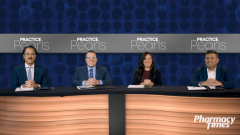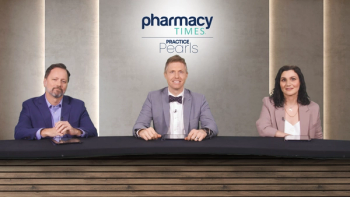
Inhibitor Formation in Hemophilia A Prophylaxis
Robert Sidonio Jr, MD, MSc, discusses studies on inhibitor formation in patients with hemophilia A using prophylaxis, addressing the challenges of mitigating inhibitor risk and the impact on treatment strategies.
Episodes in this series

Jonathan Ogurchak, PharmD, CSP: Now I know earlier we talked a little bit about inhibitor formation. And how you could tend to see that a little bit more with the extended half -life products, especially when you're using it for prophylaxis. There's been some studies out there that have looked at that. Dr Sidonio, what do you think some of the takeaways might be as it relates to prophylaxis and inhibitor formation?
Robert Sidonio Jr, MD, MSc: Yeah, I think what we've learned over time is that regardless of the strategy that we employ, patients will continue to develop inhibitors. It doesn't matter if there's a famous study done before where they tried to avoid giving factor 8 early and giving recombinant 7A, those patients developed. Inhibitors at the same rate, whether you start prophylaxis early, whether you wait a certain amount of time, whether you avoid vaccines, whether you, you know, do you go in, even there was even a study that looked at sending nurses out so they can expertly give the infusions to limit the amount of trauma, give low doses. And they just haven't seen anybody, any strategy that's been able to mitigate inhibitor formation. So when you talk about the more recent studies, for example, Loctate, there was some excitement just based on some of the immunology studies that maybe the inhibitor rate would be potentially lower. What they found was is that maybe the high -titer inhibitor rate was slightly lower than some of the other studies. When you looked at about 100 children that were called previously untreated patients or pups with severe HMA, the overall inhibitor rate was about the same. It was in line with most studies, around 30%. It's also difficult, because when you look at high-titer, which is greater than five Bethesda units per mil, and low-titer, which is less than that, it depends on when you check for the inhibitor. If you're checking it, like if you checked it two more days later, it may be high-titer versus when you checked it. So there certainly could be some differences there.
I think looking at the overall rate is important. But with all the studies that have been done, typically the overall inhibitor rate is around 25 % to 40%. A small portion of those are transient, so they just go away on their own. But the majority of those require some sort of intervention, either switching to emicizumab or doing a form of immune tolerance. We just haven't seen any products where they've broken this barrier, where they've just completely changed the way this is. For the most part, most of the products have around the same inhibitor rate. There might be some slight differences. It's very difficult, because right now they're not going to be doing any more previously untreated patient studies, and most of the big studies are considered 100 patients. You can see if you had 200, 300, maybe the numbers would be closer, but they often have a confidence interval that's pretty wide. We do know that in that allocate study, though, and what's really important is even though we have new products, when you use these extended half -life products or standard half -life products, and they have, of course, on studies, they have high adherence rates, the bleed rates are terrific. I mean, you can get achieved bleed rates of less than two to three in most patients. You can eliminate most spontaneous bleeds. It's always hard to eliminate treatment of bleeds at all in children. They will fall, and they jump off of tables, and they do all kinds of crazy stuff. You're going to have to treat. But when you use any of these strategies, and if you decide that you want to do factor prophylaxis, it's very effective. It can be a little more challenging to give and minister. But once it's utilized as directed, you can actually achieve pretty good outcomes. And these studies continue to show that patients participate in sports, and they do well. The quality of life is improved. Limit the joint damage and stuff like that. It's just a matter of choice of what you want to do. We're hoping in the future somebody will come up with a way to lower the inherent risk of inhibitors. But for the most part, it's these non-modifiable risk factors. Your genetic mutation may contribute to it, or your family history may be a big contributor to it. You can't control those.
Transcript is AI generated and reviewed by a Pharmacy Times editor.
Newsletter
Stay informed on drug updates, treatment guidelines, and pharmacy practice trends—subscribe to Pharmacy Times for weekly clinical insights.














































































































































































































